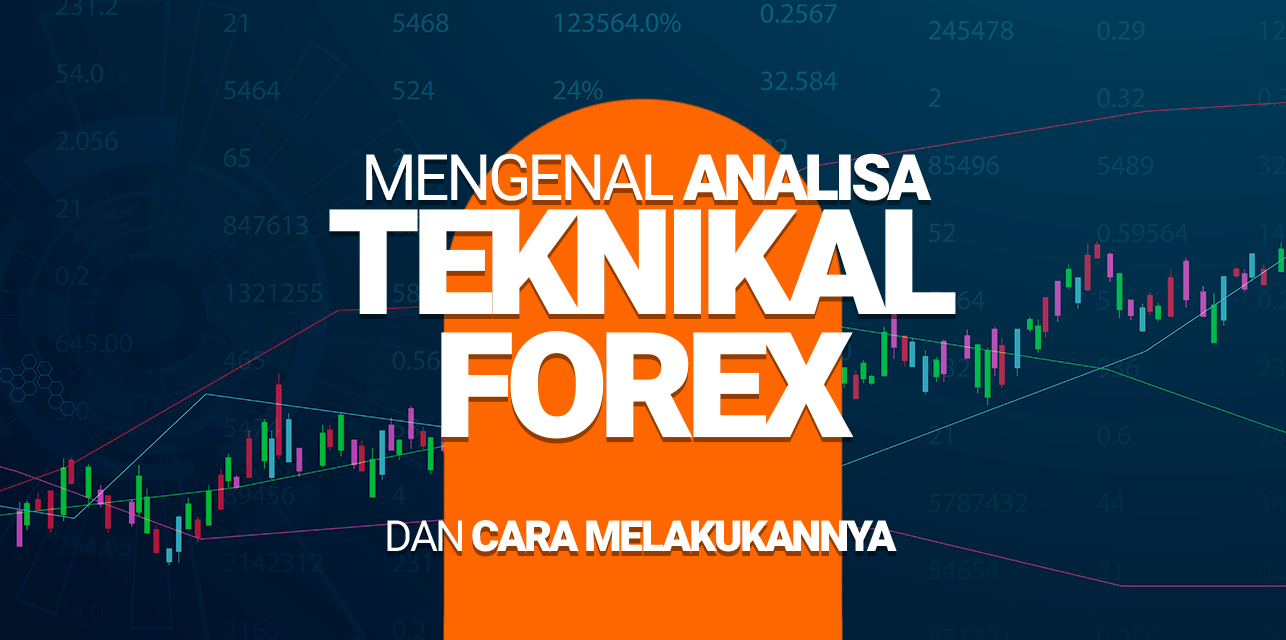Basically, forex trading technical analysis is an analysis based on reading price movements or charts using past price movement graphs. Unlike fundamental analysis, this technical analysis is done to find movement patterns that are considered to be repeated later so that future forex market conditions can be predicted. Here is a more complete review of forex technical analysis itself.
Key Points in Technical Analysis
In forex technical analysis, there are three important points that you need to understand first, namely the basic concept of forex technical analysis, the concept of forex trendlines, and the concept of support and resistance in forex trading.
-
Basics of Forex Technical Analysis
Forex technical analysis is based on historical data. In an effort to read this information, a trader must try to find patterns that move in cycles. If the price movement pattern has been proven to form a cycle, traders will easily predict when profitable price movements will repeat themselves, making it easier to determine crucial trading times.
-
Trendline Forex
This trendline is a fairly common tool, you can even access it while practicing using a demo account. In the trendline there are three types of trends. The first is an uptrend, a condition where the price is moving up. The second is a downtrend, a condition where the price is moving down. The last is a flat or sideways trend, a condition where the price is in a constant state neither going up nor down.
The concept of forex trendlines is an attempt to recognize trends in trading activities. This trendline will translate price movements into graphs to make them easier to read. This trend is of course related to the price movements of currency pairs in the forex market.
-
Support & Resistance
The concept of support & resistance is also related to the movement of currency prices, where one of the factors that affects the currency is supply and demand. So it is natural if there is a condition where there is no movement in the currency price at all. This happens because supply and demand are not large enough to affect the price of the currency.
When doing forex analysis you can also predict the time when supply and demand increase. The way to do this is by understanding the concept of support and resistance levels. Support refers to a price level with demand large enough to withstand a price decline (demand > supply). At the support level, the price will most likely continue to rise and tend to stop falling.
While resistance refers to a price tag with supply large enough to prevent a price increase (supply > demand). The resistance level is the opposite of support. At this level, the price tends not to increase anymore and will most likely continue to decline.
Steps to Perform Technical Analysis
After understanding the three important points above, next you just need to apply the steps below to perform forex technical analysis.
-
Know the Trends
Open forex trading charts and graphs. Monitor and identify the ongoing market trends. Start by identifying the long-term trend first, then the medium-term and then the short-term. Although you are allowed to identify any trend, identifying the long-term trend is considered more effective because the impact of the long-term trend is much stronger than the other two trend periods.
Next, identify the trend status: whether it is up (uptrend), down (downtrend), or flat (sideways). Once the trend has been detected, you can then take a position to trade in the same direction as the trend. If an uptrend occurs, the best opportunity is to buy. Conversely, when there is a downtrend, the best opportunity is to sell.
-
Support & Resistance
The next step after recognizing the trend is to determine the support and resistance levels. At the support level you can look for opportunities to buy, while at the resistance level you can look for opportunities to sell. Make sure this is done after you have taken the first step of recognizing the trend. You only use these support and resistance levels as a strengthening factor for your position from the trend benchmark, especially if it turns out that the price movement trend of the currency pair in the forex market is not read properly.
-
Moving Average
On the forex trading platform that you use, there is usually a Moving Average (MA) indicator that can help identify trend status, especially if you have trouble determining the trend with a trendline. When the MA shows a downward movement and the price moves below the MA, this means a downtrend is occurring.
Conversely, when the price moves above the MA with an upward movement, an uptrend is occurring. Not only detecting trends. MA can also be used to determine support and resistance levels. MA above the price movement acts as a resistance level, while MA below the price movement acts as support.
-
Oscillator Indicator
This oscillator indicator functions to inform market conditions, whether market conditions are overbought or oversold. Overbought is a condition where the price is considered quite high at that time, which is then followed by a decrease in the currency price. While oversold is a condition where the price is considered quite low at that time, and is often accompanied by an increase in the currency price.
When the oscillator indicator shows an indication of overbought, you should wait for the momentum to sell. Conversely, when oversold, wait for the momentum to buy. But remember, these two conditions are not always followed by a reversal in the direction of the currency price.
-
Stop Loss & Target Profit
In this final step, don't forget to determine the stop loss level and profit target in your forex trading activity. Also apply the risk-reward-ratio rule, which is to ensure that the stop loss is not greater in value than the profit target. You must comply with this rule so that trading is safer.
Also determine how much transaction volume you will do when trading later. Adjust it to the strategy that you have created in your trading plan. This way, even if you experience a loss while trading, the risk you bear will not exceed the stop loss limit (risk of loss) itself.
That's an important review of forex technical analysis, starting from the definition of analysis methods that are often used in this forex trading process, important points, to the implementation steps that have been described above. Hope it helps!
Visit GIC Indonesia to get information about the world of trading. You can also join us in the Telegram Community GIC Trade and Telegram Channel GIC Trade. Don't forget to check the Youtube account GIC Indonesia which is full of interesting information, and follow our Instagram account to get information about various interesting webinars that you can follow.
 Last:
Last: 







